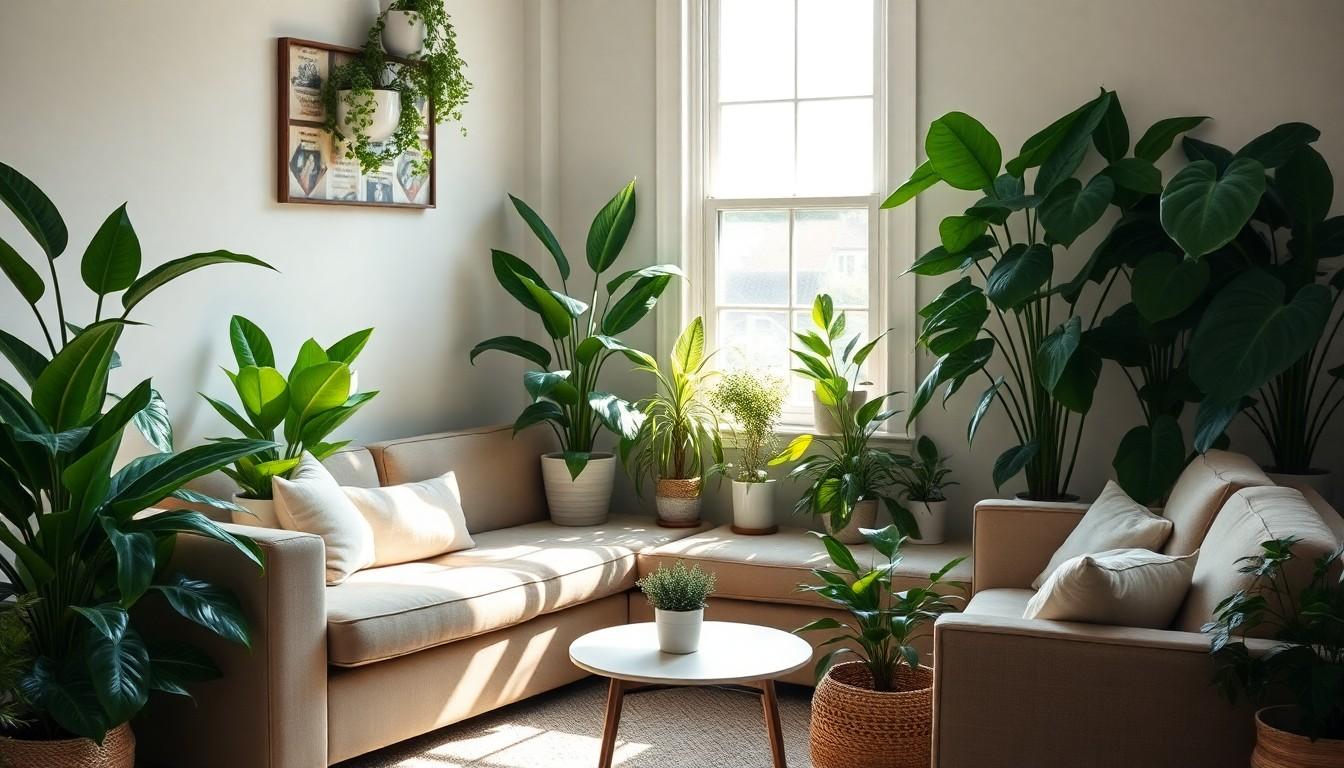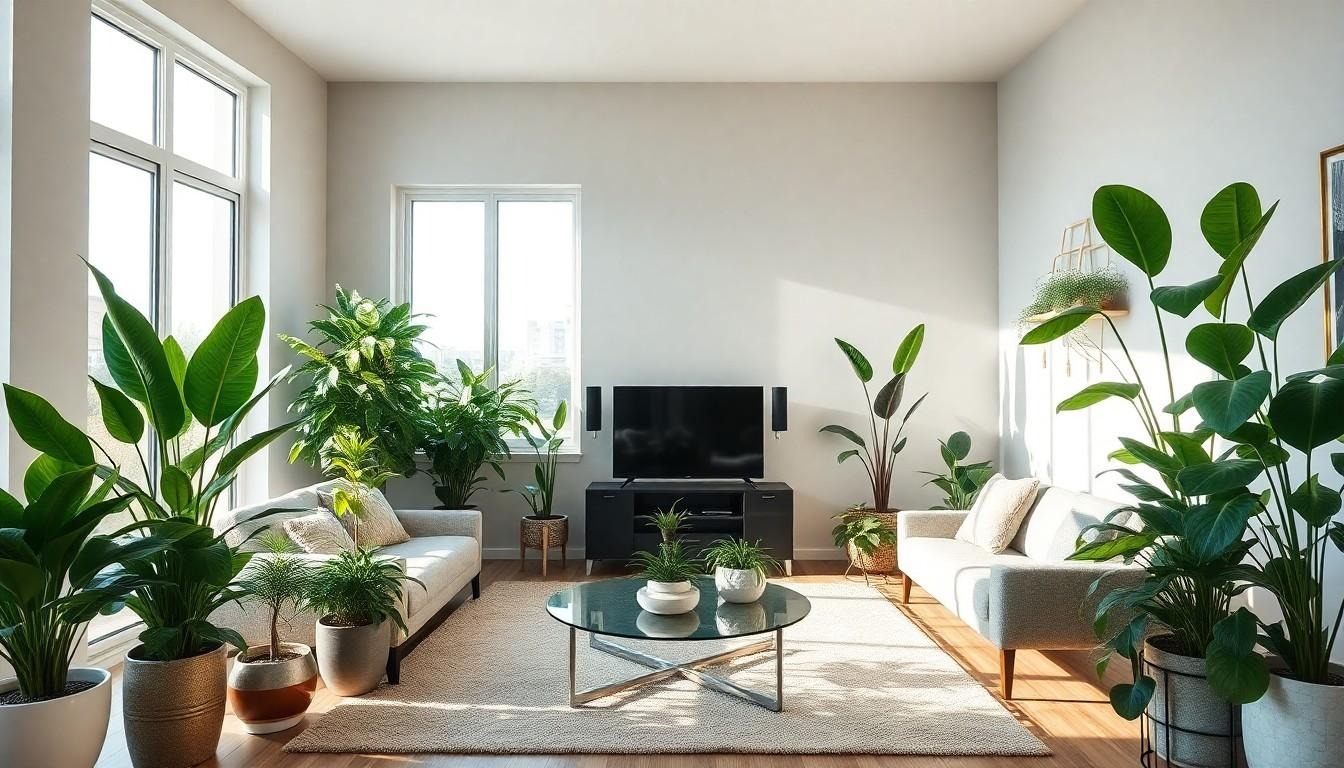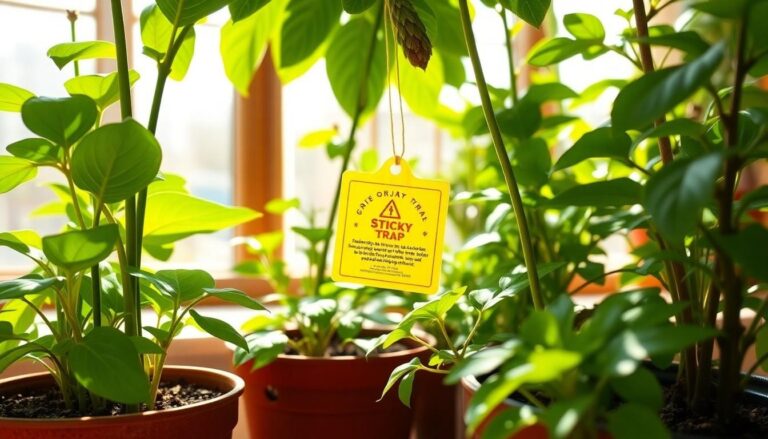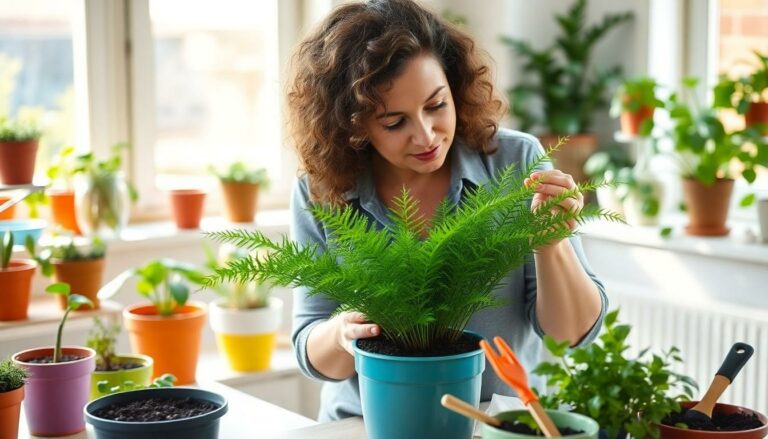Transforming a living room into a vibrant oasis doesn’t require a degree in botany or a green thumb. With the right indoor plants, anyone can elevate their space from drab to fab, all while breathing life into their home. Imagine lush greenery, vibrant colors, and the fresh scent of nature—all without stepping outside.
Indoor Plants For Living Room
Indoor plants contribute significantly to the living room environment. With their many advantages, they elevate both comfort and style.
Improve Air Quality
Indoor plants purify the air by absorbing toxins. According to NASA’s Clean Air Study, certain plants like peace lilies and spider plants eliminate formaldehyde and benzene, common indoor pollutants. Creating a healthier living space enhances overall well-being and reduces allergy symptoms. Increased oxygen levels also promote a fresher atmosphere. As a result, adding these plants creates an inviting environment for relaxation and social gatherings.
Enhance Aesthetic Appeal
Indoor plants boost the visual appeal of any living room. They introduce vibrant colors and diverse shapes, enlivening spaces. Furthermore, plants like fiddle leaf figs or snake plants serve as striking focal points. Incorporating greenery softens harsh lines of furniture and adds a layer of warmth. Arranging plants in different locations showcases their beauty and draws attention. Overall, these additions create a more inviting and stylish ambiance.
Popular Indoor Plants For Living Room

Indoor plants enhance the aesthetic and improve air quality in a living room. Selecting the right type of plants can make a substantial difference in both beauty and health benefits.
Low-Light Tolerant Plants
Sansevieria, commonly known as snake plant, thrives in low-light conditions. It requires minimal maintenance and purifies air effectively. Pothos, characterized by its heart-shaped leaves, adapts well to indirect light. ZZ plant survives in low-light and is drought-resistant. These plants add greenery without demanding much sunlight.
Flowering Plants
African violets bloom beautifully, bringing color to any living space. They prefer bright, indirect sunlight and moderate humidity. Peace lilies produce elegant white flowers while enhancing air quality. Calandiva, a succulent variety, features clusters of vibrant flowers and does well in various lighting conditions. Flowering plants create visual appeal and a refreshing atmosphere.
Foliage Plants
Fiddle leaf fig showcases large, dramatic leaves that make a stunning statement. This plant enjoys bright, filtered light and careful watering. Spider plants, with their arching leaves, thrive in various light situations and can produce baby plants. Rubber plants grow lush foliage and thrive in moderate light. Each foliage plant contributes unique aesthetics and elevates the room’s overall ambiance.
Tips For Choosing Indoor Plants
Selecting the right indoor plants requires careful consideration of various factors. Understanding the conditions within the living room plays a crucial role in plant selection.
Consider Light Conditions
Different indoor plants thrive under varying light conditions. Bright, indirect light supports options like fiddle leaf figs and peace lilies. In contrast, low-light tolerant plants like snake plants and pothos adapt well to dim environments. It’s essential to observe the amount of natural light available at different times of the day. Choosing plants that match these light levels ensures healthier growth and a thriving indoor garden.
Assess Maintenance Requirements
Maintenance levels vary among indoor plants, making it vital to assess care needs before making a choice. Some plants, like rubber plants and ZZ plants, require minimal attention, thriving with occasional watering. Others, such as African violets, may demand more frequent care and humidity. Considering personal availability and willingness to maintain plants leads to a more harmonious living space. Selecting plants aligned with one’s lifestyle promotes enjoyment and success in indoor gardening.
Care And Maintenance Of Indoor Plants
Caring for indoor plants ensures lush growth and vibrant aesthetics. Proper maintenance enhances their beauty while promoting a healthy living environment.
Watering Guidelines
Watering practices vary among indoor plants. Assess the moisture level in the soil before watering. A good rule of thumb is to allow the top inch of soil to dry out for most plants, reducing the risk of overwatering. Some plants, like snake plants, prefer drier conditions, while others, such as peace lilies, thrive with more consistent moisture. Adjust watering frequency based on seasonal changes and indoor climate. Using room temperature water helps reduce plant stress.
Fertilizing And Soil Choices
Fertilizing indoor plants supports growth and vitality. Choosing a high-quality potting mix provides essential nutrients; many indoor plants flourish in well-draining soil. Organic fertilizers like compost or fish emulsion are excellent choices for feeding plants naturally. A balanced fertilizer, applied during the growing season—spring and summer—promotes healthy foliage and blooms. Ensure to follow the recommended application rates to avoid nutrient burn. Regularly changing the top layer of soil also rejuvenates nutrient content.





